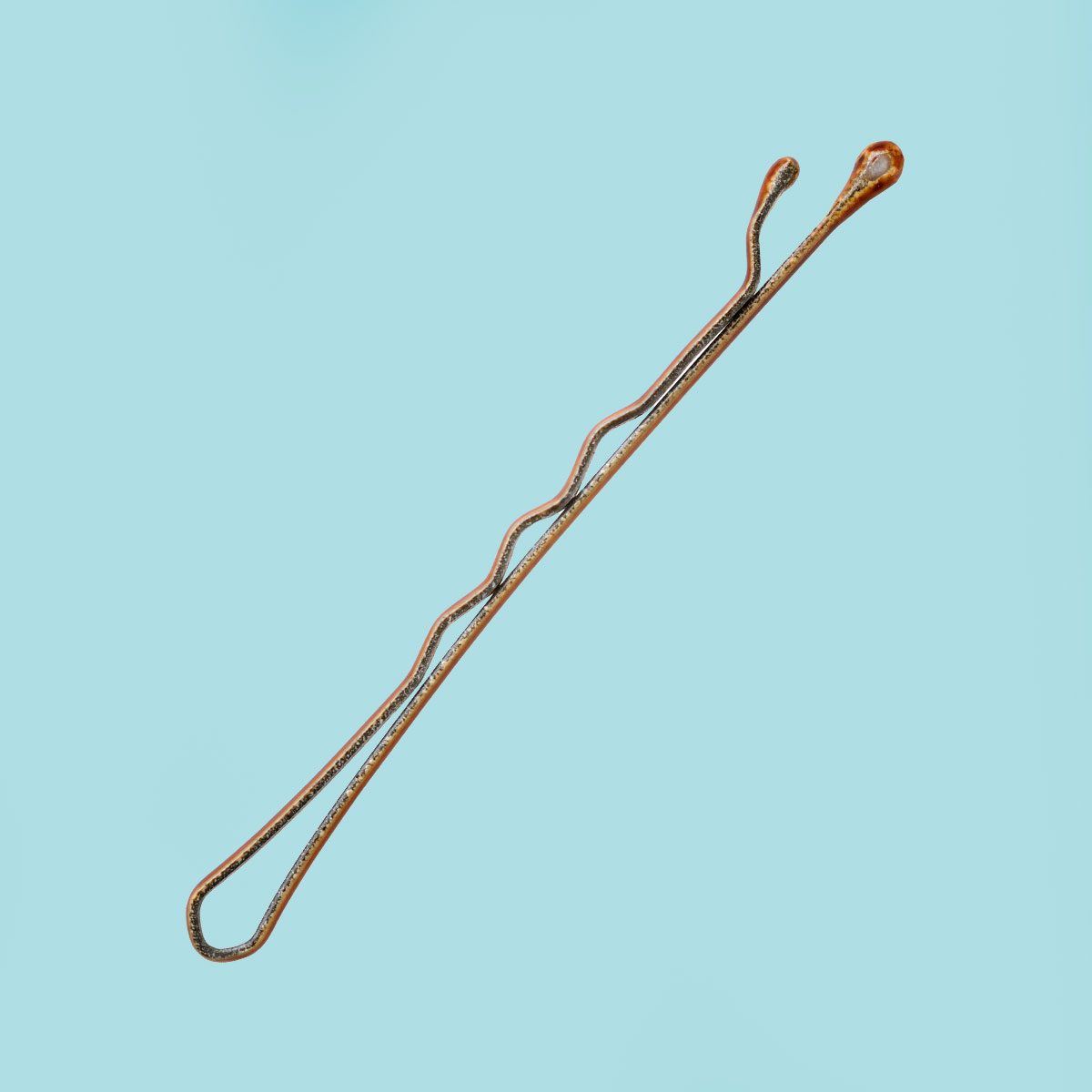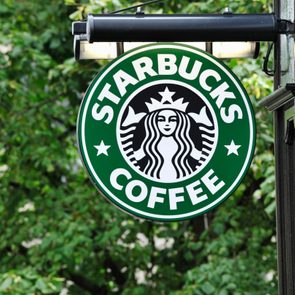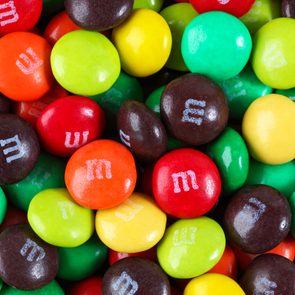Here's the twisty tale behind the world's most misplaced hair tool

Here’s How Bobby Pins Really Got Their Name—And Whether There Was a Guy Named Bobby

If you’re like me, you’ve owned approximately 6,821 bobby pins in your lifetime and currently know the location of … two. I know for sure one is in my car’s cup holder. The other one is probably lodged deep in my couch cushions, next to an Easter egg I hid too well in 2016. But while I used to think of bobby pins as just tiny tools to keep hair flyaways in check, it turns out these metal doodads have a pretty wild backstory. Who invented them? Why are they called “bobby” pins? And why do they always disappear faster than my willpower near Costco samples?
“I love bobby pins, but it’s all about quality,” says Emmy-nominated celebrity hairstylist Dean Banowetz, aka the Hollywood Hair Guy. “They’re an essential tool, and I use them every day on clients and on TV shows I work on.”
In other words, the bobby pin is the superhero of your bathroom drawer—and it’s got the historical street cred to match. Read on to brush back the bangs of history and discover everything you’ve ever wanted to know about the humble bobby pin.
Get Reader’s Digest’s Read Up newsletter for more common curiosities, humor, travel, tech and fun facts all week long.
How did bobby pins get their name?

Spoiler: It wasn’t after a guy named Bob with a flair for hair accessories. Bobby pins got their name from the bob haircut—a chin-length style typically cut straight around the head to expose the back of the neck—which exploded in popularity after World War I.
“Bobs weren’t just seen as stylish—they were bold and symbolic,” Banowetz says. “They were fresh and dramatic and showed off the neckline, breaking away from the long Victorian styles.”
The bob came to symbolize the flapper generation of the 1920s. “The bob represented independence,” Banowetz says. “It was a rebellion against the long traditional hair.” He adds that when women of the time cut their hair this short, it was seen as a subversive act. Flappers were officially done with corsets, chaperones and hair that required scaffolding to support. “They wanted freedom, and the bob delivered,” adds fashion historian John Smith.
Dancer Irene Castle was the first celebrity to sport the “daring” hairstyle, and women everywhere lined up to copy her. At first, traditional hairdressers flat-out refused to shear off women’s locks. So what did flappers do? They marched right into barbershops. (By the 1930s, the bob was so mainstream, you could get it at the beauty parlor and still be invited to tea.)
How did bobby pins become associated with bobs?
The unique hairstyle came with some unique styling problems. For starters, how the heck do you keep it from flying all over the place in the wind? The styling tools of the day—giant U-shaped hairpins and heavy combs—just weren’t cutting it (pun intended). Enter Luis Marcus, a San Francisco cosmetics manufacturer who saw the need and invented a sleek, simple pin made specifically for short hair.
Bobby pins also offered a middle ground for less adventurous ladies: They could fake a bob by tucking up their long hair with a few discreet bobby pins. Plus, it made all those trendy sculpted styles, like finger waves and pin curls, way easier to pull off without a dozen extra hands and a gallon of pomade.
“He could have called it the ‘Marcus pin,'” Smith says, “but he chose instead to link it directly with the trend it was made for.” At first, they were called “bobbing pins,” which was later shortened to “bobby pins.” Also worth noting: Although Marcus is widely credited with the invention, there are others who invented similar hairpins around the same time, including Frank DeLong, Hazel Hook Waltz, Jacob Herbert and Henry Hubbard, who is credited with developing the manufacturing process for the bobby pin.
So yes, we were super close to calling them Marcus pins. Which, let’s be honest, sounds more like a type of orthopedic screw than something cute you’d stick in your hair. Bobby pin, on the other hand? Adorable.
Well, was the bob named after a guy named Bob?
“The bob haircut itself got its name from the word bob, meaning ‘to cut short,'” Smith says. “The word dates back centuries. It was originally used to describe cropped horse tails and eventually came to refer to any cropped hair.”
So no, the iconic flapper ‘do wasn’t named after some dapper gentleman named Bob who moonlighted as a hair icon. It’s just a happy linguistic accident. Bob the man? Still great. Bob the Builder? Iconic. Bob the haircut? A full-blown cultural reset.
What did bobby pins replace, and why were they such a big deal?
Before the bobby pin, women had to MacGyver their hairstyles using whatever was lying around—tortoiseshell combs, fancy barrettes and U-shaped pins the size of (small) salad tongs. These tools worked fine for Rapunzel-length hair but weren’t as helpful in shorter hair.
“Bobby pins replaced tools like wire and combs that were bulky and unreliable,” Banowetz says. “They were a game changer—smaller, stronger and easier to hide in the hair.” The bobby pins gave women newfound control over their look, without sacrificing fashion or function.
Why do bobby pins work so well?

It’s not just a bent piece of metal, people. The bobby pin is a marvel of minimalist engineering. “The bobby pin works because the design is simple and smart,” Smith says. “Together, these parts make the pin effective without needing extra tools.”
Banowetz walks us through each piece and why it’s great:
- Bulbed ends: These little plastic or enamel-coated tips protect the scalp from scratching, and they make it easier to insert without tugging the hair, according to Banowetz. They also protect your hair from breakage, which is very considerate for an inanimate object.
- Wavy side: “The ridges help add grip, so the hair presses tighter, keeping the pin from sliding out,” Banowetz says. Did you know the wavy side should be placed downward, against the scalp? It can better grip the hair and scalp, holding the pin in place more effectively.
- Straight side: “This part holds everything flush to the scalp,” Banowetz says. “The tension between the wavy and straight sides helps lock the hair in place.” It’s also the side that faces up and is visible—unless you know the hairstylist trick where you flip it under the hair and hide it like a pro.
- Springy gap: Just like the safety pin, that minimal space between the pin arms creates “spring action,” so it opens when pushed into hair and snaps back to hold firm.
This design is why bobby pins stay put—on red carpets, wedding aisles and backup dancers during Beyoncé concerts. And if you need them to really stay? “When I’m working on bridal hair or styling performers who need added security, I dip the tips of bobby pins in eyelash adhesive before inserting them,” Banowetz says. “The glue dries and locks the pin in even more.”
What are the different types of bobby pins best for?
Turns out, not all bobby pins are created equal. There’s a whole styling arsenal out there, and you deserve to know your options.
- Standard bobby pins: About 2 inches long, they are ideal for most everyday hair types and styles. Think: ponytail touch-ups, flyaway patrol and last-minute wedding-guest buns. “They’re great for everyday pinning, sectioning and anchoring styles,” Banowetz says.
- Jumbo or XL pins: These are about 3 inches and are best for thick, curly or coarse hair. When your hair laughs in the face of “regular hold,” these are the bobby pins you call in.
- Mini pins: “Perfect for short hair, bangs or precision pinning,” Banowetz says.
- Crimped or heavy-duty pins: These are built for wigs, extensions or slippery hair textures.
- Waved or ridged pins: These are designed for grip, especially in fine, slippery or freshly washed hair that doesn’t want to behave.
- Curved pins: The curved shape is designed to lay against your scalp, making it perfect for hairdos where you don’t want the pins visible, like updos or sleek buns.
- Decorative pins: Studded with rhinestones, pearls, bows, charms or other flair, these pins are meant to be seen and admired. (Instagram likes not included, but heavily implied.) “They’re both functional and fashionable,” Banowetz says.
- Professional salon-grade pins: These premium pins are rust-resistant, tension-tested and color-matched to various hair tones.
- Color-matched or coated pins: These blend into hair for a seamless finish, which is especially important under bright lights or camera flashes.
And if you want the best of the best? “My favorite bobby pins are the Damian Monzillo pins,” Banowetz shares. “They’re high-quality and high-performance, and they hold their shape while securing the hair beautifully.”
Some stylists even use pins in patterns, like triangles or X’s, as a design element, Smith says. So yes, your middle school zigzag bobby pin design was ahead of its time. You trendsetter, you.
RELATED:
- Here’s How Pepsi Really Got Its Name
- Here’s Why an Academy Award Is Called an Oscar
- Here’s What the “A” in Chick-fil-A Stands For
About the experts
|
Why trust us
At Reader’s Digest, we’re committed to producing high-quality content by writers with expertise and experience in their field in consultation with relevant, qualified experts. We rely on reputable primary sources, including government and professional organizations and academic institutions as well as our writers’ personal experiences where appropriate. For this piece on how bobby pins got their name, Charlotte Hilton Andersen tapped her experience as a longtime journalist who specializes in common curiosities for Reader’s Digest. We verify all facts and data, back them with credible sourcing and revisit them over time to ensure they remain accurate and up to date. Read more about our team, our contributors and our editorial policies.
Sources:
- Dean Banowetz, celebrity hairstylist and founder of the Hollywood Hair Guy Academy; email interview, June 26, 2025
- John Smith, fashion historian and vice president of fashion design at Poshele; phone interview, June 25, 2025
- Los Angeles Times: “Luis Marcus; Invented Bobby Pin”























